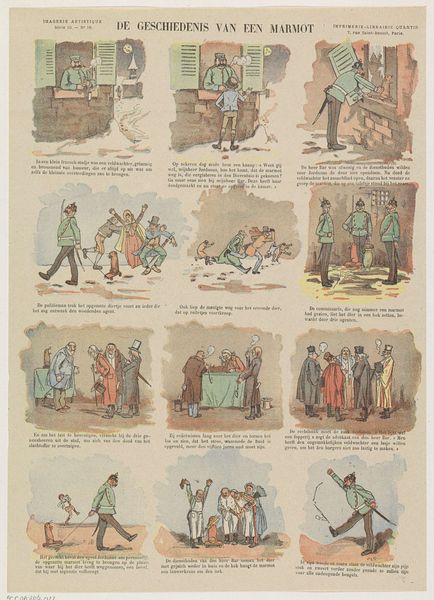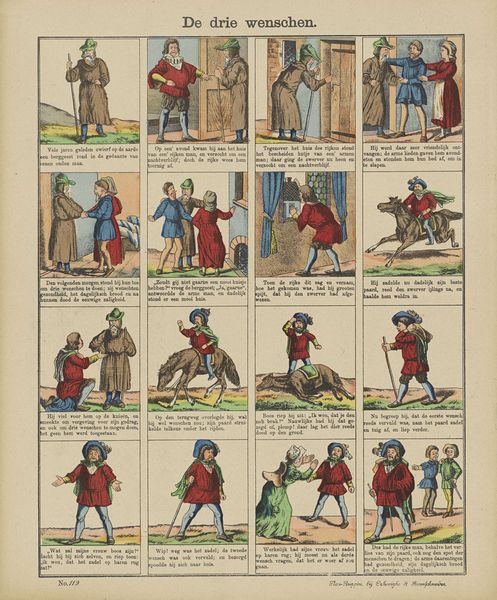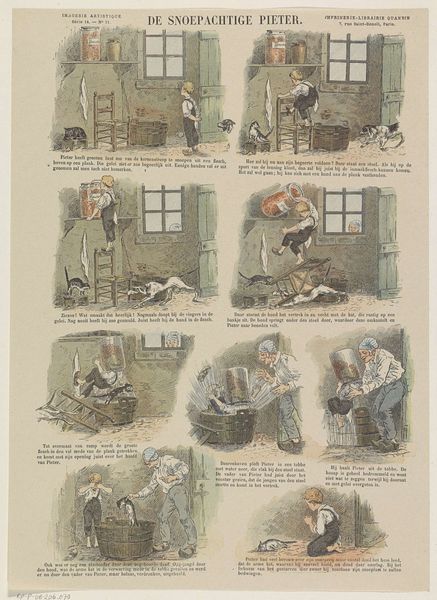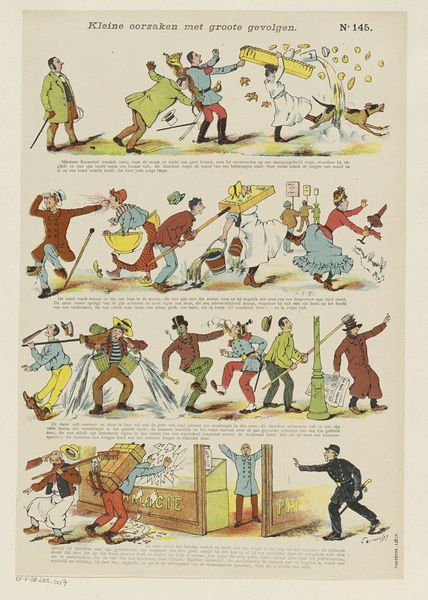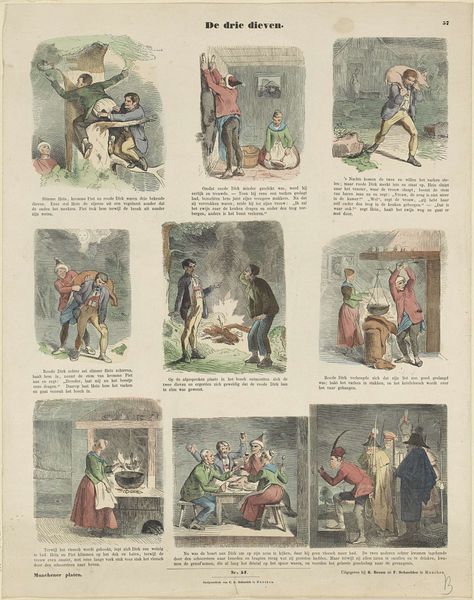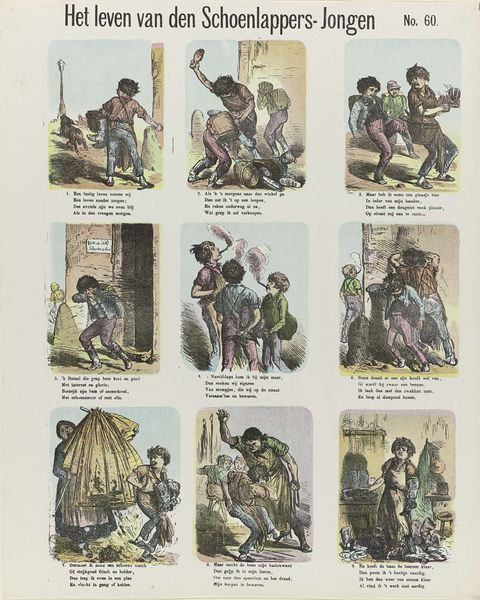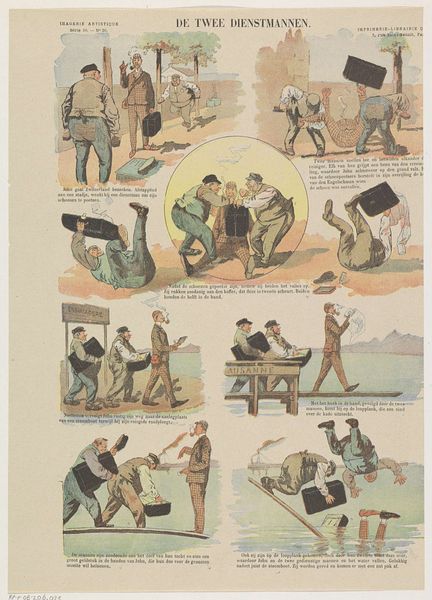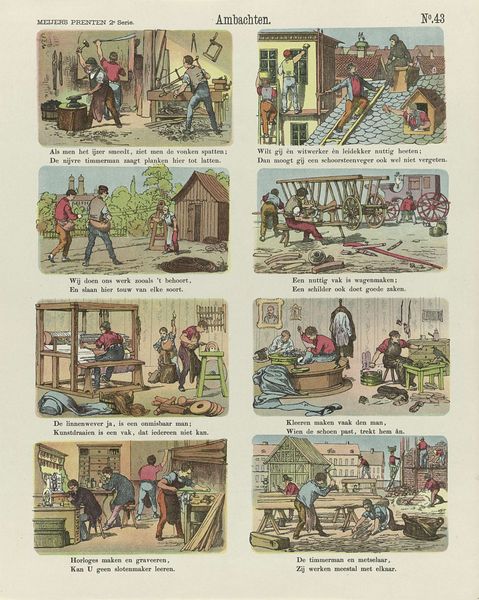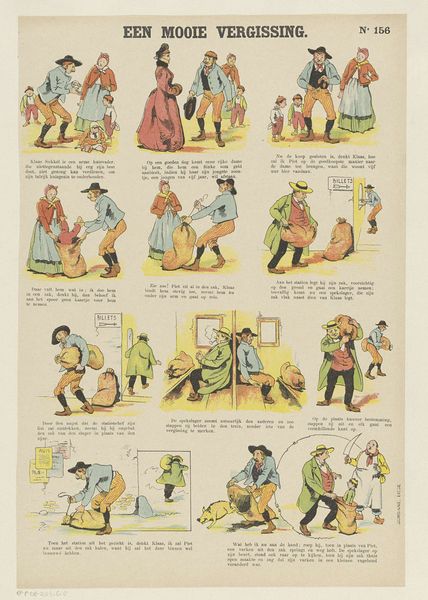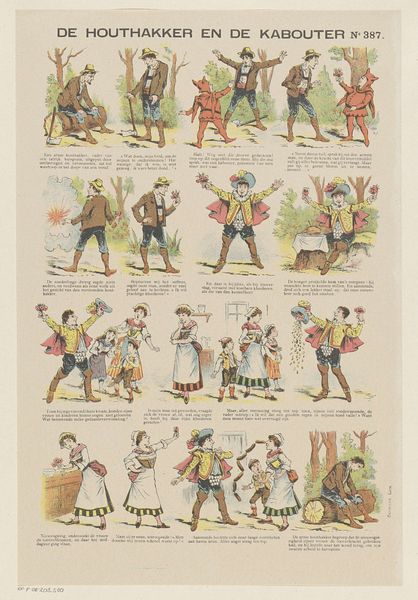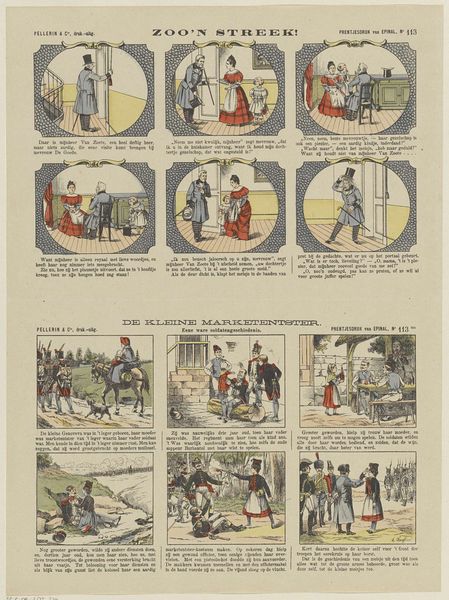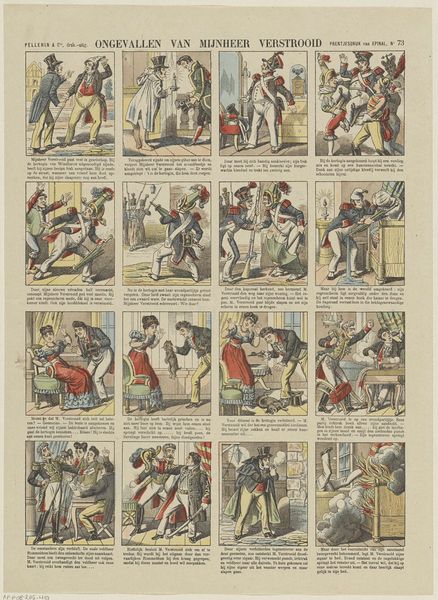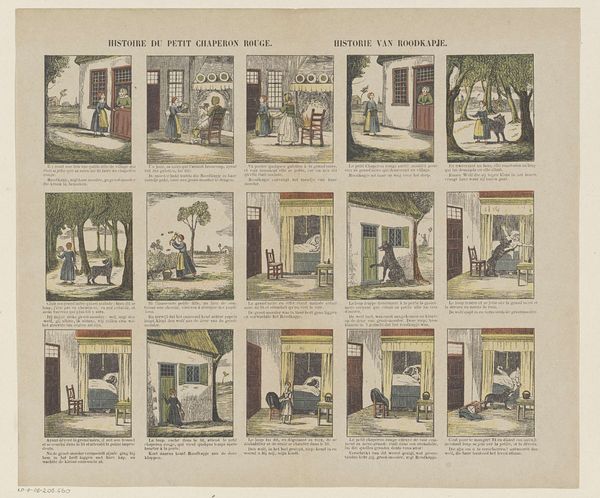
lithograph, print, etching
#
comic strip sketch
#
aged paper
#
page thumbnail
#
narrative-art
#
dutch-golden-age
#
lithograph
# print
#
etching
#
traditional media
#
personal sketchbook
#
sketchwork
#
journal
#
comic
#
sketchbook drawing
#
genre-painting
#
storyboard and sketchbook work
#
sketchbook art
Dimensions: height 443 mm, width 350 mm
Copyright: Rijks Museum: Open Domain
Curator: Here we have "Niemand kan zijn lot ontloopen", a print believed to have been created between 1843 and 1920, likely a lithograph or etching given its style. The artist is Hermann van der Moolen. Editor: My immediate impression is one of sequential narrative, like a storyboard or early comic strip. There's a charming sense of predetermination in its composition and limited color palette, hinting at themes of inescapable fate. Curator: Exactly! The title itself translates to "No one can escape their fate." Van der Moolen encapsulates the pervasive 19th-century theme of destiny shaping the individual. This artwork intersects with a growing working class unable to maneuver through stringent societal structures, capturing that feeling of being predetermined. Editor: And look how he conveys that. The repetition of the figure, Jan Baptist, moving through these miniature scenes creates a feeling of inevitability. Each panel depicts a misfortune, seemingly fated, from being bullied to being scolded. Notice the hat keeps falling! Is it a symbol of his station in life, that of someone doomed to be knocked down a peg or two? Curator: It could very well represent status, reflecting how societal roles were rigidly prescribed for working-class individuals during this period. The composition itself reflects a social critique—each panel seems confined, mirroring a lack of agency or upward mobility. Editor: What I also find striking is how the artist portrays authority. There is a continuous presence of dominating figures – teachers, wealthy men – perpetuating Jan Baptist’s misfortunes. Even the seemingly playful harassment by the other children has a deeply disturbing tone, almost like societal training for the roles and fates destined for them. Curator: Indeed, by highlighting power dynamics, the work pushes us to think critically about inherited socioeconomic standing, something scholars like Pierre Bourdieu engaged with extensively. Each small indignity Jan Baptist suffers reminds us of larger systems in place. It reveals uncomfortable truths about class, obedience, and social control. Editor: For me, seeing Jan Baptist being pushed, shouted at, and always running also raises deeper questions about the continuity of such imagery. Think about the emotional and psychological weight on children viewing or living through circumstances like this. Do certain visual shorthands persist even now, creating expectations or limitations? Curator: That’s a really powerful point, highlighting how these inherited narratives shape collective understanding. Editor: Overall, it’s far more than just a cute series of sketches! It shows us how individual stories intertwine with broader social anxieties. Curator: Definitely a work that carries so many layers. Examining such works enables us to unravel the symbolic underpinnings of culture and power relations embedded within images.
Comments
No comments
Be the first to comment and join the conversation on the ultimate creative platform.
